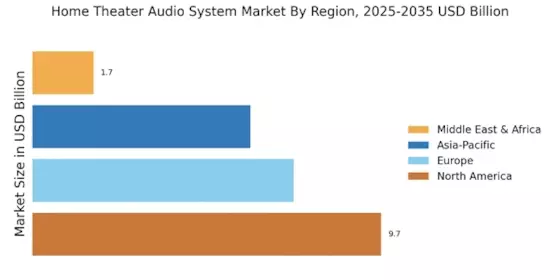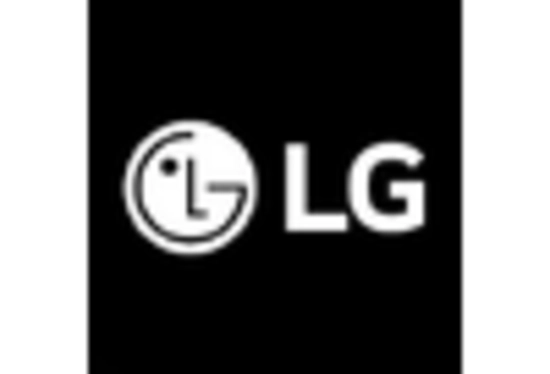The Home Theater Audio System Market is currently characterized by a dynamic competitive landscape, driven by technological advancements and evolving consumer preferences. Major players such as Sony (Japan), Samsung (South Korea), and Bose (United States) are at the forefront, each adopting distinct strategies to enhance their market positioning. Sony (Japan) emphasizes innovation through the integration of advanced audio technologies, while Samsung (South Korea) focuses on expanding its product portfolio to include smart home integration features. Bose (United States), on the other hand, leverages its strong brand reputation to target premium segments, thereby shaping a competitive environment that is increasingly focused on quality and user experience.
In terms of business tactics, companies are localizing manufacturing to reduce costs and optimize supply chains, which appears to be a response to fluctuating global trade dynamics. The market structure is moderately fragmented, with a mix of established brands and emerging players. This fragmentation allows for diverse consumer choices but also intensifies competition among key players, who are vying for market share through innovation and strategic partnerships.
In August 2025, Samsung (South Korea) announced the launch of its new line of wireless home theater systems, which incorporate AI-driven sound optimization technology. This strategic move not only enhances user experience but also positions Samsung as a leader in the integration of smart technology within home audio systems. The emphasis on AI suggests a shift towards more personalized audio experiences, which could redefine consumer expectations in the market.
In September 2025, Bose (United States) unveiled a partnership with a leading streaming service to offer exclusive audio content for its home theater systems. This collaboration is significant as it not only enhances the value proposition of Bose products but also aligns with the growing trend of content-driven consumer engagement. By integrating exclusive content, Bose aims to differentiate itself in a crowded market, potentially attracting a loyal customer base.
In October 2025, Yamaha (Japan) revealed its commitment to sustainability by launching a new range of eco-friendly home theater systems made from recycled materials. This initiative reflects a broader industry trend towards environmental responsibility, which is becoming increasingly important to consumers. Yamaha's focus on sustainability may not only enhance its brand image but also appeal to environmentally conscious consumers, thereby expanding its market reach.
As of October 2025, the competitive trends in the Home Theater Audio System Market are heavily influenced by digitalization, sustainability, and the integration of artificial intelligence. Strategic alliances, such as partnerships between audio manufacturers and content providers, are shaping the current landscape, fostering innovation and enhancing consumer engagement. Looking ahead, competitive differentiation is likely to evolve from traditional price-based competition to a focus on technological innovation, user experience, and supply chain reliability, indicating a transformative shift in how companies approach market challenges.

















Leave a Comment